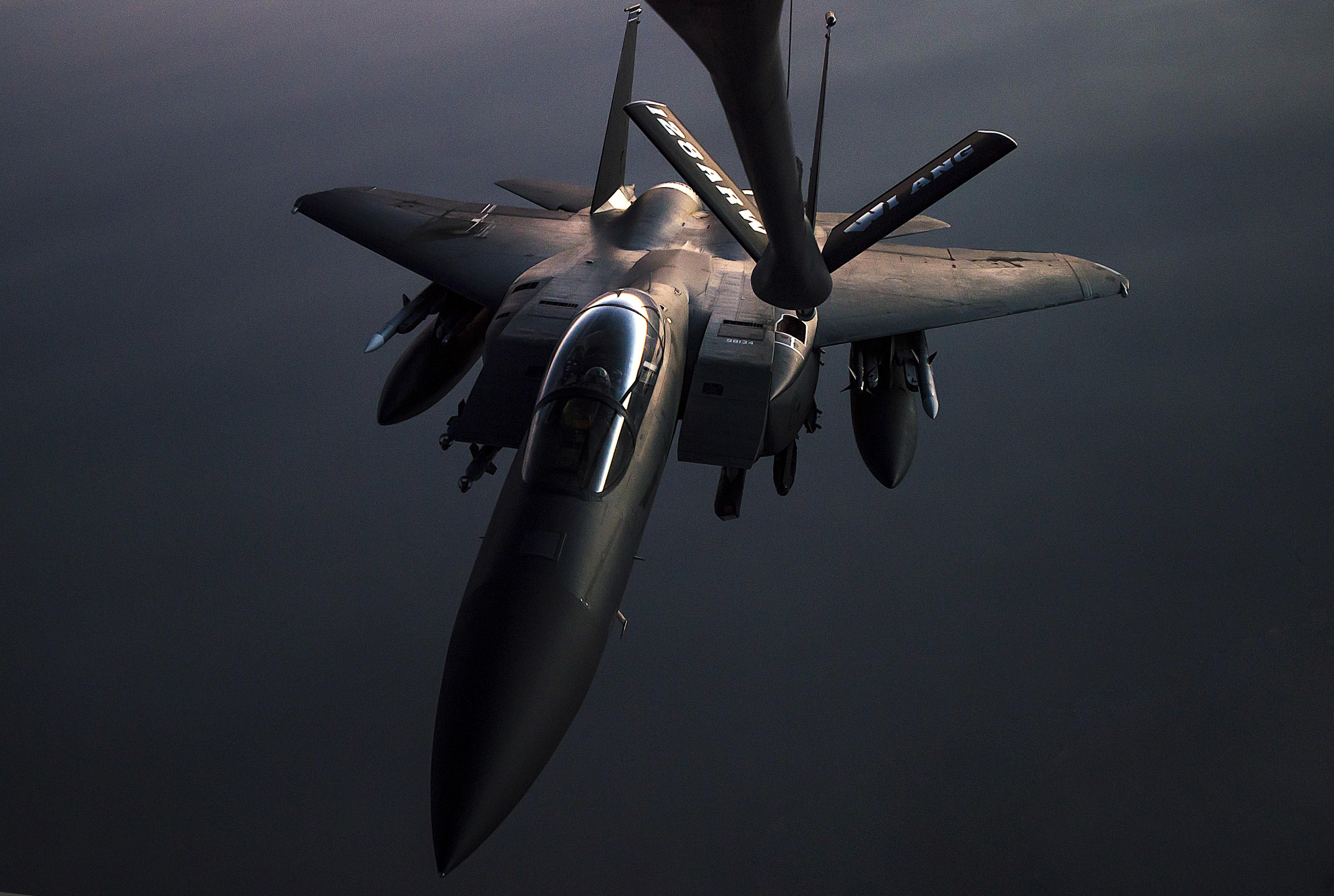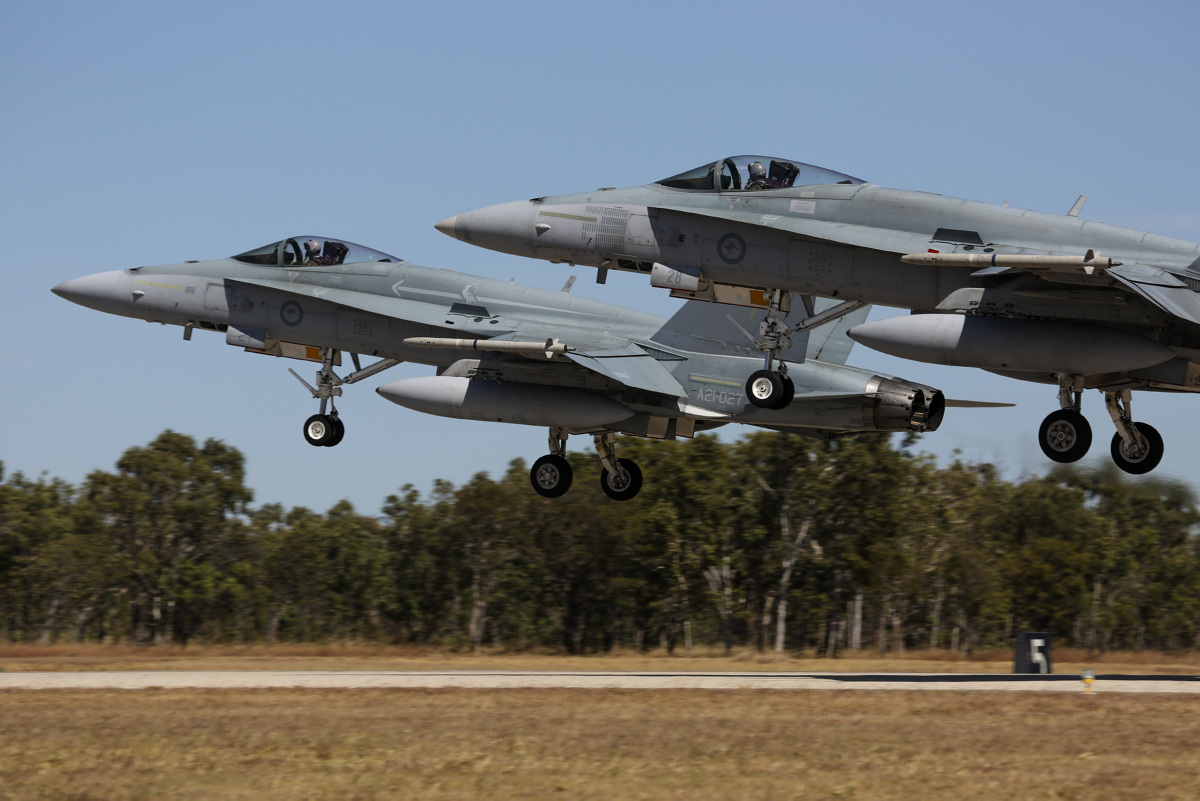
A U.S. fighter shot down an armed Syrian regime unmanned aerial vehicle (UAV) near the Jordan border on Tuesday.
According to the statement from U.S. Central Command, the Air Force F-15E Strike Eagle shot down the armed Iranian-built Shaheed-129 UAV at about 12:30 AM local time on Tuesday, or about 5:30 PM EST on Monday.
“The coalition forces were manning an established combat outpost to the northeast of At Tanf where they are training and advising partner ground forces in the fight against ISIS. This is the same location where another pro-regime UAV dropped munitions near coalition forces before it was shot down, June 8,” read the statement from CENTCOM.
“The F-15E intercepted the armed UAV after it was observed advancing on the coalition position. When the armed UAV continued to advance on the coalition position without diverting its course it was shot down.”

CENTCOM reiterated it would not hesitate to protect forces anti-regime Syrian ground forces that are aligned with the U.S. anti-ISIS coalition.
“The coalition has made it clear to all parties publically and through the de-confliction line with Russian forces that the demonstrated hostile intent and actions of pro-regime forces toward coalition and partner forces in Syria conducting legitimate counter-ISIS operations will not be tolerated,” read the statement.
“Given recent events, the Coalition will not allow pro-regime aircraft to threaten or approach in close proximity to Coalition and partnered forces.”
The shoot-down of the Syrian UAV is the third incident since June 8 in which U.S. aircraft have downed aircraft that have made hostile moves against Anti-ISIS groups that are aligned with the U.S. On June 8, another Strike Eagle brought down a UAV near At Tanf.
Sunday, a F/A-18E Super Hornet attached to the USS George H.W. Bush (CVN-77) brought down a manned regime Sukhoi Su-22 fighter south of the ISIS stronghold in Raqqah, near the town of Ja’Din. The Su-22 had dropped ordnance on positions of the Syrian Democratic Forces before the Super Hornet downed the Sukhoi about a minute later.
The downing of the Su-22 prompted the Kremlin to issue a series of threats to coalition aircraft operating over Syria.
“In areas where Russian aviation is conducting combat missions in the Syrian skies, any flying [objects], including jets and unmanned aerial vehicles of the international coalition discovered west of the Euphrates River will be followed by Russian air and ground defenses as air targets,” the ministry announced in the state-controlled news site Sputnik.

Following the Russian announcements on Monday, Australia announced it has suspended anti-ISIS air operations over Syria a day after the Kremlin issued its threats to U.S.-led coalition aircraft, the Australian Defence Force announced on Tuesday.
“As a precautionary measure, Australian Defence Force (ADF) strike operations into Syria have temporarily ceased,” Australia’s Department of Defence said in a statement.
“ADF operations in Iraq will continue as part of the coalition. … ADF personnel are closely monitoring the air situation in Syria, and a decision on the resumption of ADF air operations in Syria will be made in due course.”
Australia’s Operation Okra, their contribution to the coalition, has flown air strikes against ISIS in Syria since 2015. The Royal Australian Air Force operates six F/A-18 jets from an airfield the United Arab Emirates, in addition to a surveillance and logistics aircraft and about 400 support personnel, according to a Congressional Research Service report on allied contributions to anti-ISIS interventions.





